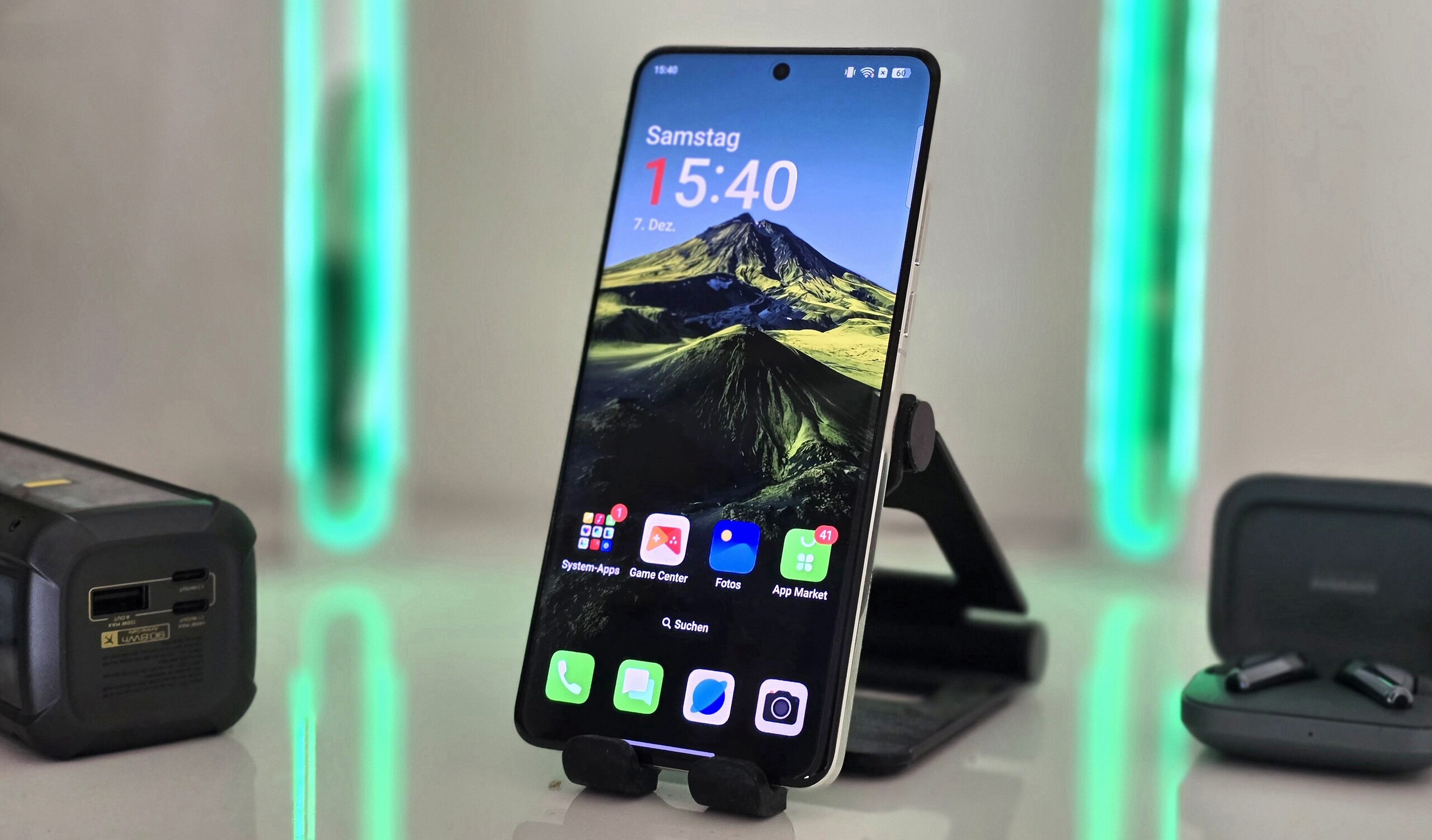
OnePlus 13 Smartphone Review: Let the battery revolution begin
Unbeatable price:parts ratio
The latest OnePlus flagship phone uses the best components at an affordable price relative to the competition. A Snapdragon 8 Elite SoC and technologies such as Si/C battery and MagSafe wireless charging are available. However, the OnePlus 13 has a few compromises that it needs to contend with.Marcus Herbrich, 👁 Daniel Schmidt, ✓ Vaidyanathan Subramaniam (translated by DeepL / Ninh Duy) Published 🇩🇪 🇫🇷 ...
Verdict: Nearly perfect
For more than a decade, new graphene battery technologies have been considered to be the holy grail in the smartphone world, with incredible promises regarding runtimes and energy density.
Now the much-hyped revolution finally seems to be starting with silicon carbon-based batteries. In addition to the fantastic runtimes, the latest flagship from OnePlus also benefits from the new Si/C semiconductors thanks to its low weight.
In contrast to its BBK cousin, the Oppo Find X8 Pro, there are some compromises in terms of the cameras. But these are less significant than they are made out to be in typical daily use. The OnePlus 13, however, has a slight advantage as it features a somewhat more powerful Snapdragon 8 Elite chipset.
Qualcomm's latest flagship SoC also overtaxes the cooling system of "normal" smartphones under high load, at least this is the case with the OnePlus 13.
All in all, we really like the new OnePlus flagship. Apart from the pronounced throttling, it has no serious weaknesses. If sustainability is important to you when buying a smartphone, you should also take a look at Samsung or Google. Both the Pixel 9 Pro and Galaxy S24+ offer a longer update period and greater transparency with regard to their software update cadence.
Pros
Cons
Price and availability
In China, the OnePlus 13 running ColorOS 15 starts at ¥4,500 (approx. €580) with 12 GB RAM and 256 GB storage. As an import device, the entry-level model costs around €720 from our rental provider Tradingshenzen at the time of testing.
For the top version of the OnePlus 13 with 24 GB of RAM and 1 TB of storage, interested buyers will have to budget around €940. However, OnePlus will probably charge around €1,000 as the RRP for the entry-level global version that will most likely be launched soon, as the successor to the OnePlus 12 (RRP: from €949), has seen a slight price increase even in China.
Possible competitors in comparison
Image | Model / Review | Price | Weight | Drive | Display |
|---|---|---|---|---|---|
| OnePlus 13 Qualcomm Snapdragon 8 Elite ⎘ Qualcomm Adreno 830 ⎘ 16 GB Memory, 512 GB | Amazon: 1. $13.98 [2+2 Pack] for OnePlus 13 Sc... 2. $23.99 Nillkin for Oneplus 13 Case ... 3. $11.99 Ibywind Screen Protector For... List Price: 720€ | 213 g | 512 GB UFS 4.0 Flash | 6.82" 3168x1440 510 PPI AMOLED | |
| Oppo Find X8 Pro Mediatek Dimensity 9400 ⎘ ARM Immortalis-G925 MC12 ⎘ 16 GB Memory, 512 GB | Amazon: 1. $11.79 TNKISRY Cover for Oppo Find ... 2. $13.28 YOUULAR [2 Pack Privacy Scre... 3. $7.96 Kepuch Screen Protector Comp... List Price: 1199€ | 215 g | 512 GB UFS 4.0 Flash | 6.78" 2780x1264 450 PPI AMOLED | |
| Samsung Galaxy S24+ Samsung Exynos 2400 ⎘ Samsung Xclipse 940 ⎘ 12 GB Memory, 512 GB | Amazon: $749.97 List Price: 1149€ | 196 g | 512 GB UFS 4.0 Flash | 6.70" 3120x1440 513 PPI AMOLED | |
| Google Pixel 9 Google Tensor G4 ⎘ ARM Mali-G715 MP7 ⎘ 12 GB Memory, 128 GB | Amazon: 1. $799.00 Google Pixel 9 - Unlocked An... 2. $999.99 Google Pixel 9 Pro - Unlocke... 3. $7.99 Supershieldz (3 Pack) Design... List Price: 899€ | 198 g | 128 GB UFS 3.1 Flash | 6.30" 2424x1080 421 PPI OLED | |
| OnePlus 12 Qualcomm Snapdragon 8 Gen 3 ⎘ Qualcomm Adreno 750 ⎘ 16 GB Memory, 512 GB | Amazon: $899.99 List Price: 979 EUR | 220 g | 512 GB UFS 4.0 Flash | 6.82" 3168x1440 510 PPI AMOLED |
Table of Contents
- Verdict: Nearly perfect
- Build: OnePlus flagship finally gets an IP69 rating
- Features: Fast USB 3.2 and IR blaster onboard
- Software: ColorOS 15 with a long update cycle
- Communication and GNSS: OnePlus 13 with dual-band GPS
- Phone functions and voice quality: OnePlus flagship without an eSIM for global variants
- Cameras: OnePlus 13 uses Sony sensors
- Accessories and Warranty: OnePlus offers a 100 W power adapter
- Input devices and operation: Ultrasonic fingerprint reader debut
- Display: LTPO 2.0 AMOLED with Dolby Vision
- Performance: Snapdragon 8 Elite tops the charts
- Gaming: OnePlus 13 is a good choice for gamers
- Emissions: Flagship killer stays pretty cool
- Energy consumption: Wireless charging and promising battery life
- Notebookcheck's overall impressions of the OnePlus 13
The main USP of OnePlus traditionally comes with the top-end variant making use of the most powerful Qualcomm chipset, so the 2024 flagship is no exception in this respect. The OnePlus 13 uses the new Snapdragon 8 Elite paired with up to 24 GB of RAM and a maximum of 1 TB UFS 4.0 storage, packing quite a punch in terms of hardware.
Apart from that, OnePlus is introducing a few new features, which can make a significant difference in everyday use such as the ultrasonic fingerprint sensor and MagSafe or Oppo Mag support for wireless charging.
The battery technology used in the OnePlus 13 is also exciting, as silicon-carbon batteries should not only be safer and more durable but also offer a high energy density. After Honor already replaced the classic lithium-ion battery with Si/C in its Magic6 Pro, other manufacturers such as Oppo are now following suit.
This is hopefully just the beginning of a battery revolution in smartphones, as this technological development is already leading to incredible nominal charges.
Those who are keen on the best Hasselblad-branded cameras will probably find the Oppo Find X8 Pro more enticing because OnePlus is cutting corners here to achieve an attractive price.
Nevertheless, the successor to the OnePlus 12 offers a fairly large 1/1.4-inch format main sensor and a periscope telephoto lens, which should benefit from Hasselblad's color tuning.
Build: OnePlus flagship finally gets an IP69 rating
There are no major changes to the overall look of the phone. The successor to the OnePlus 12 once again uses a display size of 6.82 inches, although the edges have shrunk a little compared to its predecessor.
This gives the OnePlus 13 a more modern look, which is reflected in the very efficient screen-to-body ratio of 90.7%. Despite a slightly smaller and even IP69-certified housing in all dimensions, the manufacturer has increased the battery capacity to a whopping 6,000 mAh.
This is truly remarkable, because at less than 9 mm this is still a thin flagship and, at 210 g, also pleasantly light. Thanks to the IP69 certification, the OnePlus 13 can theoretically also be cleaned with a high-pressure water jet.
OnePlus is once again offering its flagship in three color variants, but in addition to two versions with a glass back there is also a version with vegan leather to choose from this time.
The exact material used remains unclear, but the front is made of Crystal Shield glass and not Gorilla Glass. Thanks to the textured back, fingerprints are not a problem on our white test sample and the OnePlus 13 doesn't really lack in quality either.
However, the back cover does not necessarily feel like a glass material, but more like a high-quality plastic. As usual for the Chinese manufacturer, its flagship has a three-stage switch (alert slider) for sound and vibration management on the left side of the casing.
Features: Fast USB 3.2 and IR blaster onboard
The OnePlus 13 offers an appealing range of features, including Bluetooth 5.4, an IR blaster, Miracast, and NFC for contactless payment. The USB-C port has the 3.2 specification, which enables high transfer speeds of 238 MB/s in our copy test with a connected M.2 SSD (Samsung 980 Pro). The connected storage media can be formatted with NTFS or exFAT. Image output via the port can also be used with a suitable adapter.
Our test sample offers 512 GB of UFS 4.0 memory, but the actual available storage space is significantly less at 458 GB due to the operating system and some pre-installed apps. If you need more space, you can transfer files to an external storage medium such as memory sticks using USB-OTG; it is not possible to expand the memory with a microSD card.
Software: ColorOS 15 with a long update cycle
Our OnePlus 13 unit came with ColorOS version 15.0, which is based on Android 15. As a global version of the OnePlus 13 has not yet been presented, there is no OxygenOS available that natively supports the Google PlayStore and Google app. However, Google Mobile Services can be activated for ColorOS in the settings.
OxygenOS-based global variants will be released soon, but the extent to which the global ROM will receive updates is still unclear.
OnePlus is also keeping a lid on the exact update period for ColorOS. The global predecessor of the OnePlus 13 is slated to receive four major updates and five years of security patches, which would not be bad.
However, Google Pixel and Samsung Galaxy phones offer significantly longer update cycles. The security patches on our device were up to date as of November 2024.
Sustainability
OnePlus definitely has some catching up to do when it comes to sustainability. The last (public) sustainability report we found was from 2020, and the OnePlus 13 does not provide any information on the choice of materials or transparently communicate on the topic of "recycling".
The manufacturer's own repairability is also not a focus and is hardly verifiable. The packaging is probably plastic-free and was printed with inks based on soybean oil. However, the packaging itself is still protected with a film and the smartphone also uses plastic materials for transportation.
Communication and GNSS: OnePlus 13 with dual-band GPS
The OnePlus 13 supports the latest Wi-Fi 7 standard befitting a late 2024 flagship. However, we are unfortunately not yet able to fully utilize WiFi 7 with our measurements.
This is largely because corresponding routers (especially with a 10 GBit LAN port) are still hardly available. However, with the 6 GHz channel and our reference router Asus ROG Rapture GT-AXE11000, we would still achieve very high speeds. The OnePlus 13 only uses the 2.4 and 5 GHz ranges to establish a connection, at least in the version we tested for the Chinese market.
If you're thinking about importing it, you don't need to worry about the LTE bands 20 and 28, as both frequencies are supported according to the data sheet.
Otherwise, the OnePlus 13 can access the 4G and 5G mobile internet with a moderate number of available bands. The frequency coverage is not ideal for traveling, for example when staying in the USA. Here, a Pixel 9 for example, offers significantly more flexibility.
| Networking | |
| OnePlus 13 | |
| iperf3 transmit AXE11000 | |
| iperf3 receive AXE11000 | |
| iperf3 transmit AXE11000 6GHz | |
| iperf3 receive AXE11000 6GHz | |
| Oppo Find X8 Pro | |
| iperf3 transmit AXE11000 6GHz | |
| iperf3 receive AXE11000 6GHz | |
| Samsung Galaxy S24+ | |
| iperf3 transmit AXE11000 | |
| iperf3 receive AXE11000 | |
| iperf3 transmit AXE11000 6GHz | |
| iperf3 receive AXE11000 6GHz | |
| Google Pixel 9 | |
| iperf3 transmit AXE11000 | |
| iperf3 receive AXE11000 | |
| iperf3 transmit AXE11000 6GHz | |
| iperf3 receive AXE11000 6GHz | |
| OnePlus 12 | |
| iperf3 transmit AXE11000 | |
| iperf3 receive AXE11000 | |
| Average Wi-Fi 7 | |
| iperf3 transmit AXE11000 | |
| iperf3 receive AXE11000 | |
| iperf3 transmit AXE11000 6GHz | |
| iperf3 receive AXE11000 6GHz | |
| Average of class Smartphone | |
| iperf3 transmit AXE11000 | |
| iperf3 receive AXE11000 | |
| iperf3 transmit AXE11000 6GHz | |
| iperf3 receive AXE11000 6GHz | |
In order to assess the phone's positioning accuracy via satellites, we allow ourselves a short bike ride and take the Garmin Venu 2 with us as a comparison device. The OnePlus 13's positioning is determined using dual-band GNSS. We were able to get a fix on the satellite very quickly and the GNSS module is also extremely precise inside buildings.
The high-end phone proved to be very accurate in the route of our practical test; even in curves or when changing direction, we could only detect marginal inaccuracies. This means that the OnePlus 13 can also be recommended for demanding navigation tasks without hesitation.
Phone functions and voice quality: OnePlus flagship without an eSIM for global variants
In addition to a nano SIM card, the OnePlus 13 supports calls via Wi-Fi (VoWiFi) and LTE (VoLTE) networks. If you are importing this flagship cell phone, it must be borne in mind that users outside of China cannot integrate an eSIM into the system.
This shouldn't be a problem with the global version, as was the case with the OnePlus 12. Dual eSIM support, like a Pixel 9 Pro will probably not be on board here either.
Four microphones are installed for phone calls, which transmit voice clearly and comprehensibly to the other party. The AI noise suppression also works satisfactorily.
Cameras: OnePlus 13 uses Sony sensors
The front of the OnePlus 13 is adorned with a 32 MP camera, which works without pixel binning and with a fixed focus. The selfie shots are appealing nevertheless, provided there is enough light for the image sensor. The 4K60 option for videos is not really a special feature but is worth a positive mention.
A triple camera is used on the back, which is led by a 50 MP sensor from Sony. Although the Sony LYT-808 is not huge with its 1/1.4-inch format, it shines in our test photos with a strong dynamic range and good sharpness.
Even at the edges, the blurring is only moderate. It is somewhat noticeable that the photos are always on the verge of overexposure. The OnePlus 13 loses points in low light. Here, the blurring is a little too strong for our taste.
The OnePlus 13 shines when it comes to ultra wide-angle photos. The ultra wide-angle lens that includes a macro function has an appealing sharpness and little distortion. However, due to the susceptibility to lens flare, use of the 15 mm lens in strong backlighting should be avoided.
The quality of the third 50 MP camera in the group, which is responsible for telephoto photos with a lossless 3x magnification, is somewhat lower. The periscope lens based on the Sony LYT-600 captures many details up to a 6x zoom, but the images appear blurred and artificial at higher zoom levels.
Videos can be recorded in 8K30 and 4K60, and Dolby Vision is also supported at 60 frames per second. Slow motion is only possible at up to 240 fps at 1080p. We miss the 4K120 option found in the predecessor.
Image comparison
Choose a scene and navigate within the first image. One click changes the position on touchscreens. One click on the zoomed-in image opens the original in a new window. The first image shows the scaled photograph of the test device.
Wide angleWide angleLow lightUltra-wide5x ZoomUnder controlled lighting conditions, we analyze the color representation of the Sony main camera in comparison to the actual reference colors.
The 50 MP sensor reveals brightening and oversaturation in the ColorChecker Passport, especially in the green tones and cyan. The OnePlus 13 hardly shows any outliers in color fidelity (DeltaE>10) in perfect lighting.


Accessories and Warranty: OnePlus offers a 100 W power adapter
The scope of delivery includes a 100 W SuperVOOC fast-charging power adapter, a protective cover, a data or charging cable (USB-C to USB-C), a SIM pin, and a quick start guide.
A protective film is also installed on the screen ex-works. Our loaner Trading Shenzhen adds an EU adapter for the charger and a USB OTG adapter to the scope of delivery of our China version.
Our imported device has a warranty of 12 months. In the event of a warranty claim, Trading Shenzhen offers the option of sending the smartphone to a German shipping address.
Input devices and operation: Ultrasonic fingerprint reader debut
The capacitive touchscreen reacts quickly, and animations are displayed very smoothly thanks to the 120 Hz refresh rate. Input with gloves made of natural fibers, such as cotton or wool, with a thickness of up to 5 mm is also supported.
However, thicker polyester gloves also worked in our test. There is also a further development of the company's own Aqua Touch technology, called RainTouch, which allows panel to be used even when wet. A linear electric motor (x-axis) is responsible for vibrations. This provides crisp haptic feedback.
A biometric unlocking option is made possible via a face unlock function using the 32 MP cameras in 2D mode. A fingerprint sensor is also integrated into the OLED display.
What is new, however, is that this is an ultrasound-based process that recognizes our finger very reliably and quickly; OnePlus speaks of 110 ms. The positioning is also very good.
Display: LTPO 2.0 AMOLED with Dolby Vision
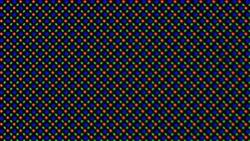
The 6.82-inch AMOLED display has a QHD+ resolution and therefore delivers a very good image sharpness of over 500 ppi. The LTPO 2.0 panel automatically adjusts the refresh rate between 1 and 120 Hz depending on the content.
The screen of the Oneplus 13 is not only very sharp and fast but also has High Visibility certification and Smart Eye Protection 4.0 certification from TÜV Rheinland.
The brightness of the panel is nearly 1,200 cd/m² in the pure white display with the ambient light sensor activated, which is quite high.
The usual effect of OLEDs, a much more pronounced luminosity in the APL18 pattern, is hardly noticeable on the OnePlus 13. We measured the same value here as with a white background.
In our measurement, the OnePlus 13 achieves the maximum display brightness of 1,687 cd/m² with HDR video material, which is within the range of the manufacturer's HBM specifications. Where the officially advertised 4,500 nits of peak brightness is supposed to be possible remains unclear.
| |||||||||||||||||||||||||
Brightness Distribution: 98 %
Center on Battery: 1155 cd/m²
Contrast: ∞:1 (Black: 0 cd/m²)
ΔE ColorChecker Calman: 1 | ∀{0.5-29.43 Ø4.8}
ΔE Greyscale Calman: 1.6 | ∀{0.09-98 Ø5.1}
99.6% sRGB (Calman 2D)
Gamma: 2.3
CCT: 6503 K
| OnePlus 13 AMOLED, 3168x1440, 6.8" | Oppo Find X8 Pro AMOLED, 2780x1264, 6.8" | Samsung Galaxy S24+ AMOLED, 3120x1440, 6.7" | Google Pixel 9 OLED, 2424x1080, 6.3" | OnePlus 12 AMOLED, 3168x1440, 6.8" | |
|---|---|---|---|---|---|
| Screen | 6% | -62% | 27% | -31% | |
| Brightness middle (cd/m²) | 1155 | 1167 1% | 1358 18% | 2063 79% | 1026 -11% |
| Brightness (cd/m²) | 1155 | 1160 0% | 1358 18% | 1914 66% | 991 -14% |
| Brightness Distribution (%) | 98 | 98 0% | 92 -6% | 84 -14% | 91 -7% |
| Black Level * (cd/m²) | |||||
| Colorchecker dE 2000 * | 1 | 0.87 13% | 3 -200% | 0.7 30% | 1.19 -19% |
| Colorchecker dE 2000 max. * | 1.8 | 1.64 9% | 4.4 -144% | 2.2 -22% | 3.3 -83% |
| Greyscale dE 2000 * | 1.6 | 1.4 12% | 2.5 -56% | 1.2 25% | 2.4 -50% |
| Gamma | 2.3 96% | 2.311 95% | 1.98 111% | 2.23 99% | 2.24 98% |
| CCT | 6503 100% | 6426 101% | 6656 98% | 6524 100% | 6920 94% |
| Color Space (Percent of sRGB) (%) | 99.5 |
* ... smaller is better
OLED technology currently allows the screen brightness to be controlled via pulse-width modulation (PWM) and DC dimming. For the OnePlus 13, we measured a DC dimming frequency of 120 Hz with an amplitude of 22% for the screen flickering with our Rigol oscilloscope.
However, the PWM determined with the oscilloscope is at a very high frequency of over 4,000 Hz. This means that health problems caused by the flickering of the panel should be limited, even for sensitive people.
Screen Flickering / PWM (Pulse-Width Modulation)
| Screen flickering / PWM detected | 120 Hz Amplitude: 21.9 % Secondary Frequency: 4166 Hz | ||
The display backlight flickers at 120 Hz (worst case, e.g., utilizing PWM) . The frequency of 120 Hz is very low, so the flickering may cause eyestrain and headaches after extended use. In comparison: 53 % of all tested devices do not use PWM to dim the display. If PWM was detected, an average of 8190 (minimum: 5 - maximum: 343500) Hz was measured. | |||
Measurement series with fixed zoom level and different brightness settings (The amplitude curve at minimum brightness looks flat, but this is due to the scaling. The info box shows the enlarged version of the amplitude at minimum brightness)
The setting options for the display under ColorOS are not very extensive, but the provided three color profiles and the option to adjust the color temperature should be completely sufficient for most users.
We examine the deviations in the calibration of the AMOLED panel using the Calman Ultimate analysis software from Portrait Displays.
In the "Pro" profile, the sRGB color space is controlled and almost completely covered. Differences in the individual colors are not discernible, as our measured DeltaE values are very low.
Display Response Times
| ↔ Response Time Black to White | ||
|---|---|---|
| 1.13 ms ... rise ↗ and fall ↘ combined | ↗ 0.581 ms rise | |
| ↘ 0.545 ms fall | ||
| The screen shows very fast response rates in our tests and should be very well suited for fast-paced gaming. In comparison, all tested devices range from 0.1 (minimum) to 240 (maximum) ms. » 4 % of all devices are better. This means that the measured response time is better than the average of all tested devices (20.3 ms). | ||
| ↔ Response Time 50% Grey to 80% Grey | ||
| 3.6 ms ... rise ↗ and fall ↘ combined | ↗ 1.482 ms rise | |
| ↘ 2.117 ms fall | ||
| The screen shows very fast response rates in our tests and should be very well suited for fast-paced gaming. In comparison, all tested devices range from 0.165 (minimum) to 636 (maximum) ms. » 12 % of all devices are better. This means that the measured response time is better than the average of all tested devices (31.8 ms). | ||
The viewing angle stability of the OLED panel is very appealing. Only the brightness drops slightly at flat viewing angles. The OnePlus 13 is also easy to read outdoors, but reflections on the reflective surface of the display glass can somewhat impair readability.
The brightness levels are sufficient even for midsummer conditions, but the competition, such as the Galaxy S24+, shines much brighter in our practical APL test.
Performance: Snapdragon 8 Elite tops the charts
Performance deficits are something that the OnePlus 13 does not have to worry about for many years. The Snapdragon 8 Elite offers so much power with its Oryon performance cores and a peak clock of 4.32 GHz that even an Apple A18 Pro looks old in the Geekbench multi-core tests.
The Snapdragon 8 Elite clearly beats the Dimensity 9400 in the Find X8 Pro, which illustrates the OnePlus 13's high performance in single-core. However, the Qualcomm chipset performs less than ideally in AI benchmarks.
| UL Procyon AI Inference for Android - Overall Score NNAPI | |
| Oppo Find X8 Pro | |
| Google Pixel 9 | |
| OnePlus 13 | |
| Average of class Smartphone (3769 - 81594, n=134, last 2 years) | |
| OnePlus 12 | |
| Average Qualcomm Snapdragon 8 Elite (8865 - 22767, n=16) | |
| Samsung Galaxy S24+ | |
| Geekbench AI | |
| Single Precision TensorFlow NNAPI 1.1 | |
| Oppo Find X8 Pro | |
| Google Pixel 9 | |
| Average of class Smartphone (122 - 4122, n=41, last 2 years) | |
| Average Qualcomm Snapdragon 8 Elite (267 - 754, n=5) | |
| OnePlus 12 | |
| OnePlus 13 | |
| Half Precision TensorFlow NNAPI 1.1 | |
| Oppo Find X8 Pro | |
| Google Pixel 9 | |
| Average of class Smartphone (122 - 32120, n=41, last 2 years) | |
| Average Qualcomm Snapdragon 8 Elite (271 - 755, n=5) | |
| OnePlus 12 | |
| OnePlus 13 | |
| Quantized TensorFlow NNAPI 1.1 | |
| Oppo Find X8 Pro | |
| Google Pixel 9 | |
| Average of class Smartphone (118 - 44381, n=41, last 2 years) | |
| Average Qualcomm Snapdragon 8 Elite (641 - 1765, n=5) | |
| OnePlus 12 | |
| OnePlus 13 | |
The graphics calculations are performed by the integrated Adreno 830, which also performs extremely well in the benchmarks. Especially in the demanding GFXBench tier tests, the OnePlus 13 is able to better flex its muscles compared to an Immortalis G925.
The scores themselves are sometimes higher than those of the Qualcomm's reference numbers, which is interesting.
GFXBench (DX / GLBenchmark) 2.7: T-Rex Onscreen | 1920x1080 T-Rex Offscreen
GFXBench 3.0: on screen Manhattan Onscreen OGL | 1920x1080 1080p Manhattan Offscreen
GFXBench 3.1: on screen Manhattan ES 3.1 Onscreen | 1920x1080 Manhattan ES 3.1 Offscreen
GFXBench: on screen Car Chase Onscreen | 1920x1080 Car Chase Offscreen | on screen Aztec Ruins High Tier Onscreen | 2560x1440 Aztec Ruins High Tier Offscreen | on screen Aztec Ruins Normal Tier Onscreen | 1920x1080 Aztec Ruins Normal Tier Offscreen | 3840x2160 4K Aztec Ruins High Tier Offscreen
| 3DMark / Wild Life Extreme Unlimited | |
| OnePlus 13 | |
| Oppo Find X8 Pro | |
| OnePlus 12 | |
| Samsung Galaxy S24+ | |
| Google Pixel 9 | |
| 3DMark / Wild Life Extreme | |
| OnePlus 13 | |
| Oppo Find X8 Pro | |
| OnePlus 12 | |
| Samsung Galaxy S24+ | |
| Google Pixel 9 | |
| 3DMark / Wild Life Unlimited Score | |
| OnePlus 13 | |
| OnePlus 12 | |
| Samsung Galaxy S24+ | |
| Google Pixel 9 | |
| 3DMark / Solar Bay Score | |
| OnePlus 13 | |
| Oppo Find X8 Pro | |
| Samsung Galaxy S24+ | |
| OnePlus 12 | |
| Google Pixel 9 | |
| 3DMark / Solar Bay Unlimited Score | |
| OnePlus 13 | |
| Oppo Find X8 Pro | |
| Samsung Galaxy S24+ | |
| OnePlus 12 | |
| 3DMark / Steel Nomad Light Unlimited Score | |
| OnePlus 13 | |
| Oppo Find X8 Pro | |
| OnePlus 12 | |
| Google Pixel 9 | |
| 3DMark / Steel Nomad Light Score | |
| OnePlus 13 | |
| Oppo Find X8 Pro | |
| OnePlus 12 | |
| Google Pixel 9 | |
| GFXBench (DX / GLBenchmark) 2.7 / T-Rex Onscreen | |
| Google Pixel 9 | |
| Samsung Galaxy S24+ | |
| OnePlus 12 | |
| Oppo Find X8 Pro | |
| OnePlus 13 | |
| GFXBench (DX / GLBenchmark) 2.7 / T-Rex Offscreen | |
| OnePlus 13 | |
| Oppo Find X8 Pro | |
| OnePlus 12 | |
| Google Pixel 9 | |
| Samsung Galaxy S24+ | |
| GFXBench 3.0 / Manhattan Onscreen OGL | |
| Google Pixel 9 | |
| Samsung Galaxy S24+ | |
| Oppo Find X8 Pro | |
| OnePlus 12 | |
| OnePlus 13 | |
| GFXBench 3.0 / 1080p Manhattan Offscreen | |
| OnePlus 13 | |
| Oppo Find X8 Pro | |
| Samsung Galaxy S24+ | |
| OnePlus 12 | |
| Google Pixel 9 | |
| GFXBench 3.1 / Manhattan ES 3.1 Onscreen | |
| Google Pixel 9 | |
| Samsung Galaxy S24+ | |
| OnePlus 12 | |
| Oppo Find X8 Pro | |
| OnePlus 13 | |
| GFXBench 3.1 / Manhattan ES 3.1 Offscreen | |
| OnePlus 13 | |
| Oppo Find X8 Pro | |
| Samsung Galaxy S24+ | |
| OnePlus 12 | |
| Google Pixel 9 | |
| GFXBench / Car Chase Onscreen | |
| Google Pixel 9 | |
| Samsung Galaxy S24+ | |
| OnePlus 12 | |
| Oppo Find X8 Pro | |
| OnePlus 13 | |
| GFXBench / Car Chase Offscreen | |
| OnePlus 13 | |
| Oppo Find X8 Pro | |
| OnePlus 12 | |
| Samsung Galaxy S24+ | |
| Google Pixel 9 | |
| GFXBench / Aztec Ruins High Tier Onscreen | |
| Samsung Galaxy S24+ | |
| Google Pixel 9 | |
| OnePlus 12 | |
| Oppo Find X8 Pro | |
| OnePlus 13 | |
| GFXBench / Aztec Ruins High Tier Offscreen | |
| OnePlus 13 | |
| Oppo Find X8 Pro | |
| OnePlus 12 | |
| Samsung Galaxy S24+ | |
| Google Pixel 9 | |
| GFXBench / Aztec Ruins Normal Tier Onscreen | |
| Google Pixel 9 | |
| Samsung Galaxy S24+ | |
| OnePlus 12 | |
| Oppo Find X8 Pro | |
| OnePlus 13 | |
| GFXBench / Aztec Ruins Normal Tier Offscreen | |
| OnePlus 13 | |
| Oppo Find X8 Pro | |
| OnePlus 12 | |
| Samsung Galaxy S24+ | |
| Google Pixel 9 | |
| GFXBench / 4K Aztec Ruins High Tier Offscreen | |
| OnePlus 13 | |
| Oppo Find X8 Pro | |
| OnePlus 12 | |
| Samsung Galaxy S24+ | |
| Google Pixel 9 | |
The OnePlus 13 delivers excellent results in the browser tests and offers very good performance for everyday use. There are no perceivable delays when scrolling or accessing complex websites.
| Jetstream 2 - 2.0 Total Score | |
| OnePlus 13 (Chrome 131) | |
| Average Qualcomm Snapdragon 8 Elite (75.1 - 329, n=17) | |
| Oppo Find X8 Pro (Chrome 131) | |
| OnePlus 12 (Chrome 126) | |
| Average of class Smartphone (23.8 - 387, n=148, last 2 years) | |
| Samsung Galaxy S24+ (Chrome 121) | |
| Google Pixel 9 (Chrome 129) | |
| Speedometer 2.0 - Result 2.0 | |
| OnePlus 13 (Chrome 140) | |
| Average Qualcomm Snapdragon 8 Elite (244 - 603, n=9) | |
| OnePlus 12 (Chrome 126) | |
| Oppo Find X8 Pro (Chrome 131) | |
| Samsung Galaxy S24+ (Chrome 121) | |
| Average of class Smartphone (15.2 - 621, n=129, last 2 years) | |
| Google Pixel 9 (Chrome 129) | |
| Speedometer 3 - Score 3.0 | |
| OnePlus 13 (Chrome 131) | |
| Average Qualcomm Snapdragon 8 Elite (15.3 - 36.8, n=15) | |
| Oppo Find X8 Pro (Chrome 131) | |
| OnePlus 12 (Chrome 126) | |
| Google Pixel 9 (Chrome 129) | |
| Average of class Smartphone (1.03 - 41.7, n=118, last 2 years) | |
| WebXPRT 4 - Overall | |
| OnePlus 13 (Chrome 131) | |
| OnePlus 12 (Chrome 126) | |
| Samsung Galaxy S24+ (Chrome 121) | |
| Average Qualcomm Snapdragon 8 Elite (102 - 255, n=16) | |
| Oppo Find X8 Pro (Chrome 131) | |
| Average of class Smartphone (27 - 302, n=142, last 2 years) | |
| Google Pixel 9 (Chrome 129) | |
| Octane V2 - Total Score | |
| OnePlus 13 (Chrome 131) | |
| Average Qualcomm Snapdragon 8 Elite (25448 - 95506, n=23) | |
| OnePlus 12 (Chrome 126) | |
| Samsung Galaxy S24+ (Chrome 121) | |
| Oppo Find X8 Pro (Chrome 131) | |
| Google Pixel 9 | |
| Average of class Smartphone (2228 - 119218, n=195, last 2 years) | |
| Mozilla Kraken 1.1 - Total | |
| Average of class Smartphone (263 - 28190, n=150, last 2 years) | |
| Google Pixel 9 (Chrome 129) | |
| Samsung Galaxy S24+ (Chrome 121) | |
| Oppo Find X8 Pro (Chrome 131) | |
| OnePlus 12 (Chrome 126) | |
| Average Qualcomm Snapdragon 8 Elite (383 - 1170, n=18) | |
| OnePlus 13 (Chrome 131) | |
* ... smaller is better
In terms of speed, the UFS 4.0 memory offers strong performance. Whether reading or writing to disk, the values of the OnePlus 13 are at an absolute high-end level. However, there is still some room for improvement when processing smaller data blocks.
| OnePlus 13 | Oppo Find X8 Pro | Samsung Galaxy S24+ | Google Pixel 9 | OnePlus 12 | Average 512 GB UFS 4.0 Flash | Average of class Smartphone | |
|---|---|---|---|---|---|---|---|
| AndroBench 3-5 | -16% | -29% | -50% | 27% | 9% | -25% | |
| Sequential Read 256KB (MB/s) | 3984.23 | 3482.9 -13% | 2450.9 -38% | 1584.56 -60% | 3297.57 -17% | 3675 ? -8% | 2214 ? -44% |
| Sequential Write 256KB (MB/s) | 3684.36 | 3498.5 -5% | 1523.87 -59% | 256.48 -93% | 3246.21 -12% | 3072 ? -17% | 1820 ? -51% |
| Random Read 4KB (MB/s) | 301.29 | 375.7 25% | 387.42 29% | 226.41 -25% | 438.5 46% | 382 ? 27% | 294 ? -2% |
| Random Write 4KB (MB/s) | 344.63 | 100.4 -71% | 176.19 -49% | 266.19 -23% | 652.8 89% | 463 ? 34% | 339 ? -2% |
Gaming: OnePlus 13 is a good choice for gamers
The Snapdragon 8 Elite has plenty of performance to offer, but does this also come into play when gaming? We take a look at the gaming performance with the GameBench app.
OnePlus advertises its flagship with the self-developed Tidal engine, which is supposed to ensure high frame rates in high-resolution scenes. Modern games, such as PUBG Mobile, can be played in low details at 120 fps. However, the highest detail level (UHD) is only possible at the "mandatory" 40 fps.
Our second game, the demanding Genshin Impact, is displayed very consistently at 60 fps in the highest graphics settings. Frame drops are virtually non-existent, although the waste heat could lead to a reduction in the frame rate during very long gaming sessions (see "Emissions" section).
Emissions: Flagship killer stays pretty cool
Temperature
The OnePlus 13 uses the company's own second-generation Tiangong cooling system, consisting of stainless steel vacuum chamber with double-layer 2K graphite.
Measured against the sheer power of the Snapdragon 8 Elite the heat emissions are quite limited — we measured only 46 °C under load.
However, things get interesting in the Wild Life Stress tests of 3DMark. Here, the heat development leads to a high throttling of the system performance of around 50%. A performance reduction in everyday use is therefore not unlikely under prolonged load phases, such as demanding games.
(±) The maximum temperature on the upper side is 44.3 °C / 112 F, compared to the average of 35.2 °C / 95 F, ranging from 21.9 to 247 °C for the class Smartphone.
(-) The bottom heats up to a maximum of 46.1 °C / 115 F, compared to the average of 34 °C / 93 F
(+) In idle usage, the average temperature for the upper side is 27.6 °C / 82 F, compared to the device average of 32.9 °C / 91 F.
3DMark Steel Nomad Stress Test
| 3DMark | |
| Wild Life Stress Test Stability | |
| Oppo Find X8 Pro | |
| Samsung Galaxy S24+ | |
| OnePlus 12 | |
| Google Pixel 9 | |
| OnePlus 13 | |
| Wild Life Extreme Stress Test | |
| Samsung Galaxy S24+ | |
| OnePlus 12 | |
| Google Pixel 9 | |
| Oppo Find X8 Pro | |
| OnePlus 13 | |
| Solar Bay Stress Test Stability | |
| Samsung Galaxy S24+ | |
| Oppo Find X8 Pro | |
| OnePlus 13 | |
| Steel Nomad Light Stress Test Stability | |
| OnePlus 12 | |
| Google Pixel 9 | |
| Oppo Find X8 Pro | |
| OnePlus 13 | |
Loudspeaker
The OnePlus 13 relies on a dual speaker system with a really good playback quality. Even the bass, though not very prominent, is easily perceptible, as our pink noise measurement confirms.
The mids also show a linear frequency curve and only the very high frequencies drop significantly.
If you prefer external devices for sound output, you can use the wired USB-C port or wireless Bluetooth 5.4 but with a limited selection of codecs.
OnePlus 13 audio analysis
(+) | speakers can play relatively loud (91.8 dB)
Bass 100 - 315 Hz
(-) | nearly no bass - on average 23% lower than median
(+) | bass is linear (4.5% delta to prev. frequency)
Mids 400 - 2000 Hz
(+) | balanced mids - only 4.3% away from median
(+) | mids are linear (4.2% delta to prev. frequency)
Highs 2 - 16 kHz
(+) | balanced highs - only 4.1% away from median
(+) | highs are linear (3% delta to prev. frequency)
Overall 100 - 16.000 Hz
(±) | linearity of overall sound is average (15.6% difference to median)
Compared to same class
» 3% of all tested devices in this class were better, 3% similar, 93% worse
» The best had a delta of 12%, average was 35%, worst was 134%
Compared to all devices tested
» 22% of all tested devices were better, 4% similar, 73% worse
» The best had a delta of 4%, average was 24%, worst was 134%
Oppo Find X8 Pro audio analysis
(+) | speakers can play relatively loud (87.8 dB)
Bass 100 - 315 Hz
(-) | nearly no bass - on average 17.9% lower than median
(±) | linearity of bass is average (9.6% delta to prev. frequency)
Mids 400 - 2000 Hz
(+) | balanced mids - only 2.7% away from median
(+) | mids are linear (3.8% delta to prev. frequency)
Highs 2 - 16 kHz
(+) | balanced highs - only 4.3% away from median
(+) | highs are linear (4.5% delta to prev. frequency)
Overall 100 - 16.000 Hz
(+) | overall sound is linear (13.8% difference to median)
Compared to same class
» 0% of all tested devices in this class were better, 1% similar, 99% worse
» The best had a delta of 12%, average was 35%, worst was 134%
Compared to all devices tested
» 14% of all tested devices were better, 4% similar, 82% worse
» The best had a delta of 4%, average was 24%, worst was 134%
Energy consumption: Wireless charging and promising battery life
Power consumption
After Honor had dispensed with the classic Li-ion battery with the Magic6 Pro, Oppo is now following suit with its flagship smartphones in relying on a silicon-carbon-based battery. This promises really good runtimes for the OnePlus 13, in line with what the Find X8 Pro shows.
The 6,000 mAh battery is charged with a maximum charging capacity of 100 W via USB-C or 50 W wirelessly. MagSafe and Oppo Mag compatibility is new for the OnePlus flagship; the matching Oppo AIRVOOC Wireless Charger costs around €60. In the test, we needed just under 40 minutes to fully charge the OnePlus 13 with the included power adapter.
The power consumption of the Snapdragon 8 Elite is rather inconspicuous under load. However, at almost 2 W, we still see room for energy savings when the OnePlus 13 is idle.
| Off / Standby | |
| Idle | |
| Load |
|
Key:
min: | |
| OnePlus 13 6000 mAh | Oppo Find X8 Pro 5910 mAh | Samsung Galaxy S24+ 4900 mAh | Google Pixel 9 4700 mAh | OnePlus 12 5400 mAh | Average Qualcomm Snapdragon 8 Elite | Average of class Smartphone | |
|---|---|---|---|---|---|---|---|
| Power Consumption | 36% | 30% | 6% | 7% | -3% | 15% | |
| Idle Minimum * (Watt) | 0.86 | 0.6 30% | 0.43 50% | 0.66 23% | 1.3 -51% | 1.083 ? -26% | 0.856 ? -0% |
| Idle Average * (Watt) | 1.74 | 0.8 54% | 0.84 52% | 1.49 14% | 0.95 45% | 1.657 ? 5% | 1.423 ? 18% |
| Idle Maximum * (Watt) | 1.85 | 0.9 51% | 0.95 49% | 1.78 4% | 1.12 39% | 1.86 ? -1% | 1.599 ? 14% |
| Load Average * (Watt) | 10.69 | 6.8 36% | 6.76 37% | 7.44 30% | 10.55 1% | 9.01 ? 16% | 7.1 ? 34% |
| Load Maximum * (Watt) | 11.92 | 10.9 9% | 16.42 -38% | 16.64 -40% | 11.72 2% | 12.8 ? -7% | 11.1 ? 7% |
* ... smaller is better
Leistungsaufnahme: Geekbench (150 cd/m²)
Leistungsaufnahme: GFXbench (150 cd/m²)
Battery life
The large battery capacity enables the OnePlus 13 to achieve excellent run times in our practical battery tests, which are carried out with an adjusted display brightness of 150 cd/m² and at a QHD+ resolution.
With over 22 hours in the Wi-Fi test and almost 39 hours of continuous video playback with the Wi-Fi module deactivated, most users should be able to achieve a stamina of two days or longer in everyday use.
It is noticeable that the idle value is lower than the video playback runtime, which is why we will run the idle battery test again and adjust it via an update if necessary.
| OnePlus 13 6000 mAh | Oppo Find X8 Pro 5910 mAh | Samsung Galaxy S24+ 4900 mAh | Google Pixel 9 4700 mAh | OnePlus 12 5400 mAh | |
|---|---|---|---|---|---|
| Battery runtime | 20% | -25% | -24% | -14% | |
| Reader / Idle (h) | 37.8 | 61.1 62% | 35 -7% | 32.8 -13% | |
| H.264 (h) | 38.7 | 32.9 -15% | 16.3 -58% | 30.3 -22% | |
| WiFi v1.3 (h) | 22.5 | 23.5 4% | 16.8 -25% | 16.5 -27% | 20.6 -8% |
| Load (h) | 4 | 5.2 30% | 3.9 -2% |
Notebookcheck's overall impressions of the OnePlus 13
The OnePlus 13 offers a lot of high-end technology for a comparatively low entry-level price together with great battery run times.
OnePlus 13
- 12/12/2024 v8
Marcus Herbrich
Transparency
The selection of devices to be reviewed is made by our editorial team. The test sample was provided to the author as a loan by the manufacturer or retailer for the purpose of this review. The lender had no influence on this review, nor did the manufacturer receive a copy of this review before publication. There was no obligation to publish this review. As an independent media company, Notebookcheck is not subjected to the authority of manufacturers, retailers or publishers.
This is how Notebookcheck is testing
Every year, Notebookcheck independently reviews hundreds of laptops and smartphones using standardized procedures to ensure that all results are comparable. We have continuously developed our test methods for around 20 years and set industry standards in the process. In our test labs, high-quality measuring equipment is utilized by experienced technicians and editors. These tests involve a multi-stage validation process. Our complex rating system is based on hundreds of well-founded measurements and benchmarks, which maintains objectivity. Further information on our test methods can be found here.









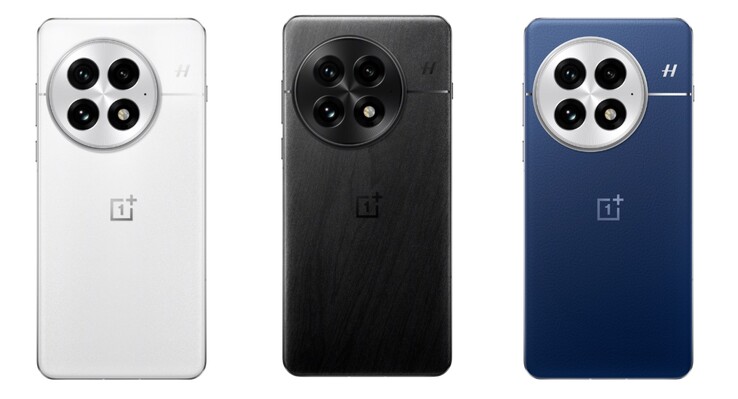
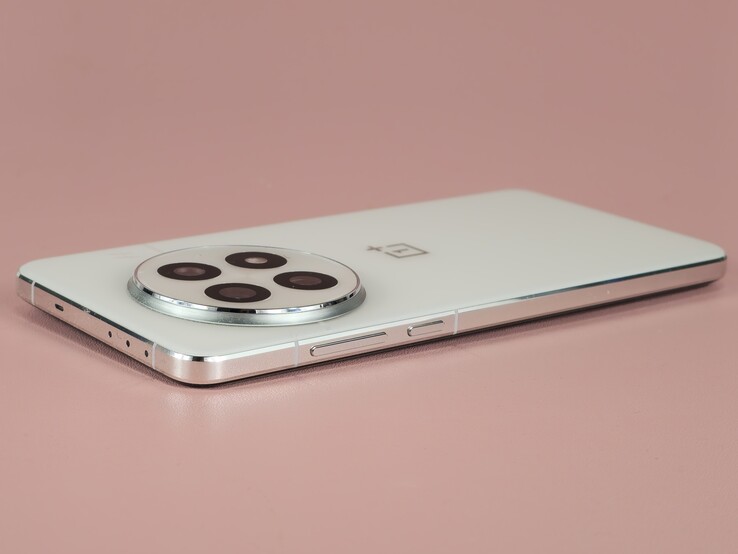






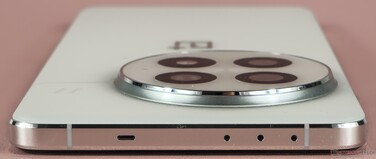
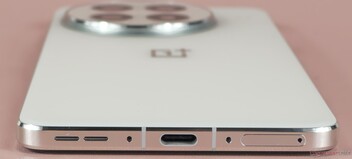
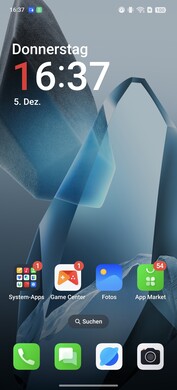
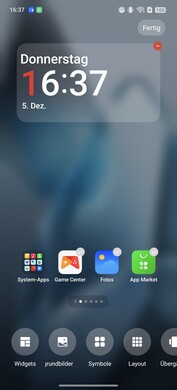
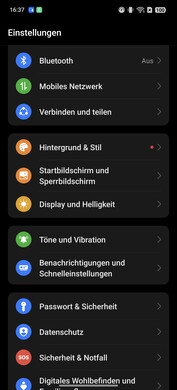
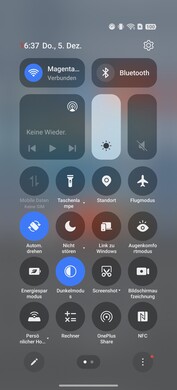
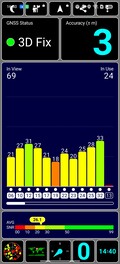
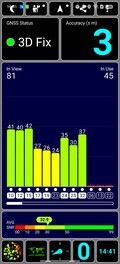

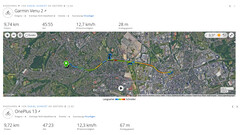


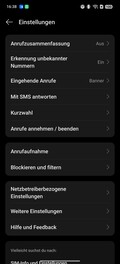








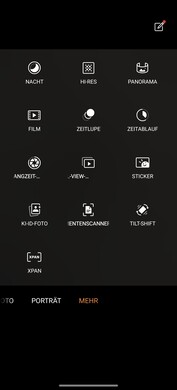
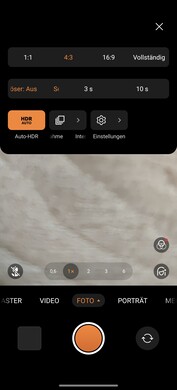
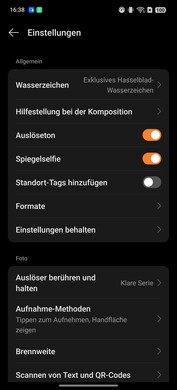


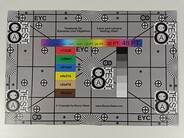



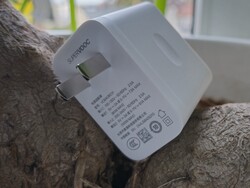
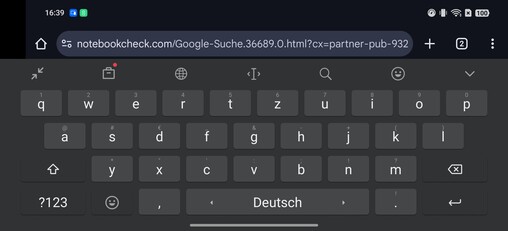


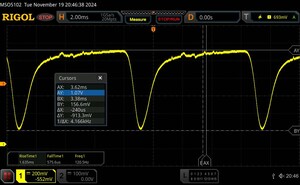







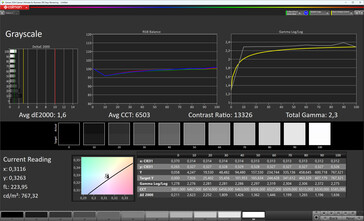
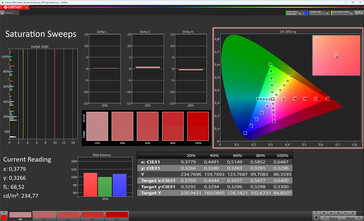
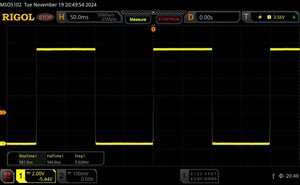
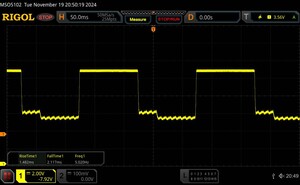
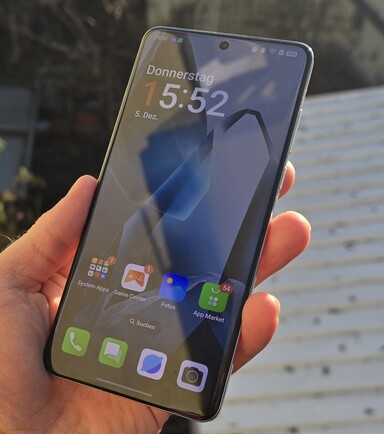
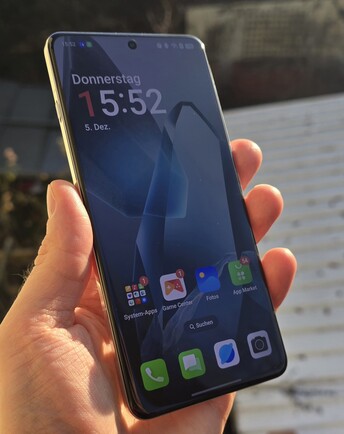



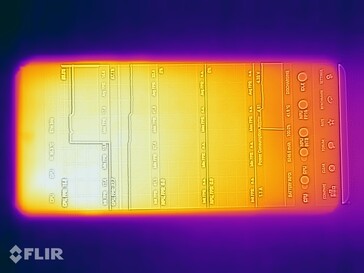
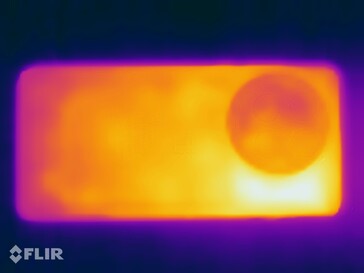
 Total Sustainability Score:
Total Sustainability Score: 








